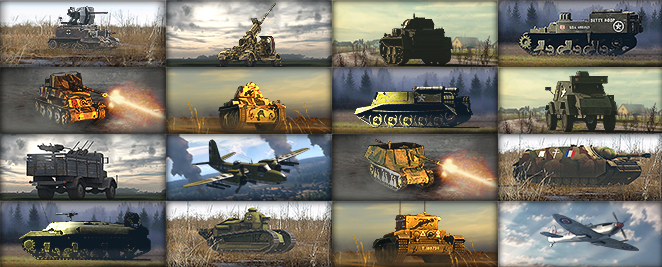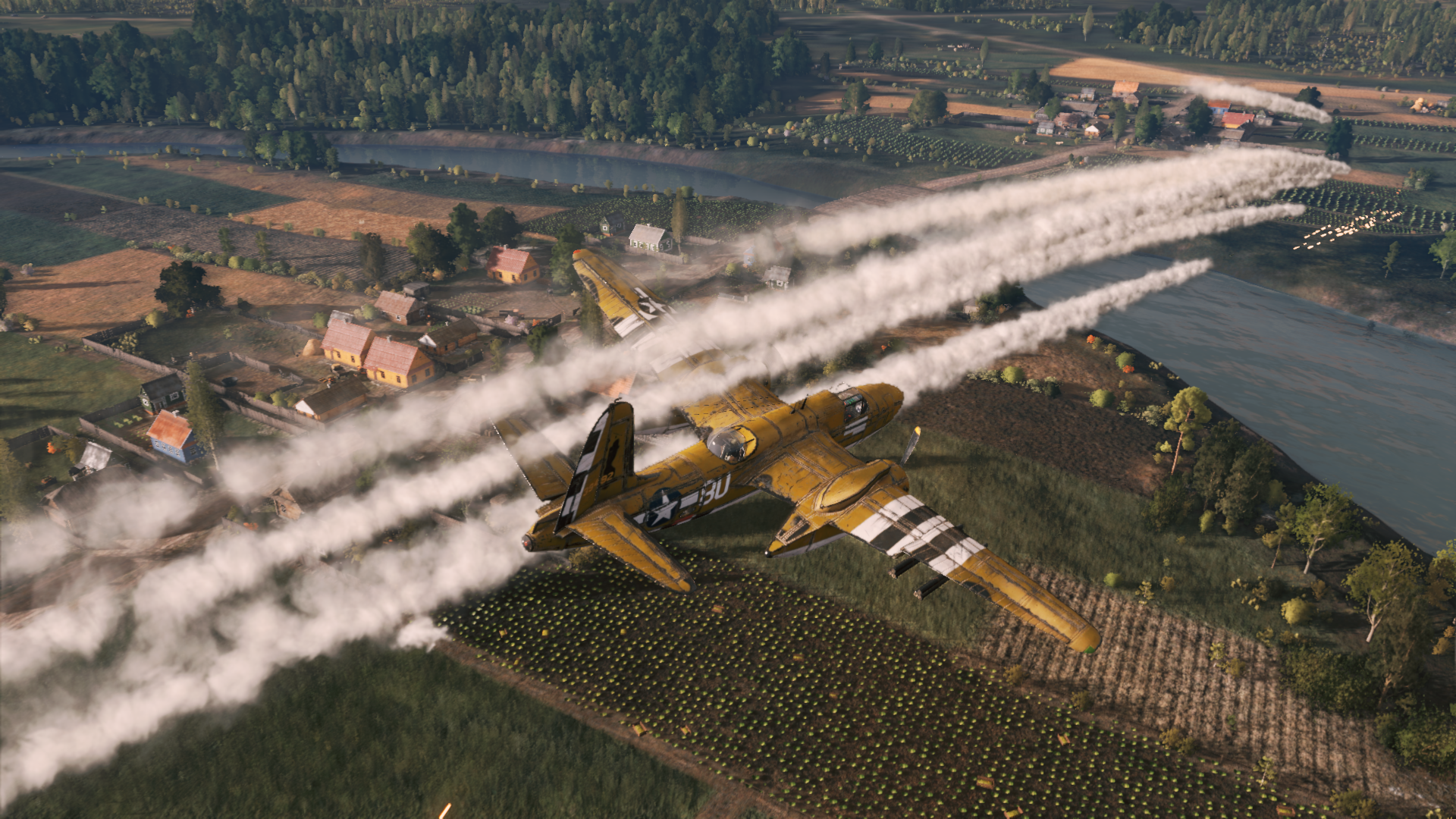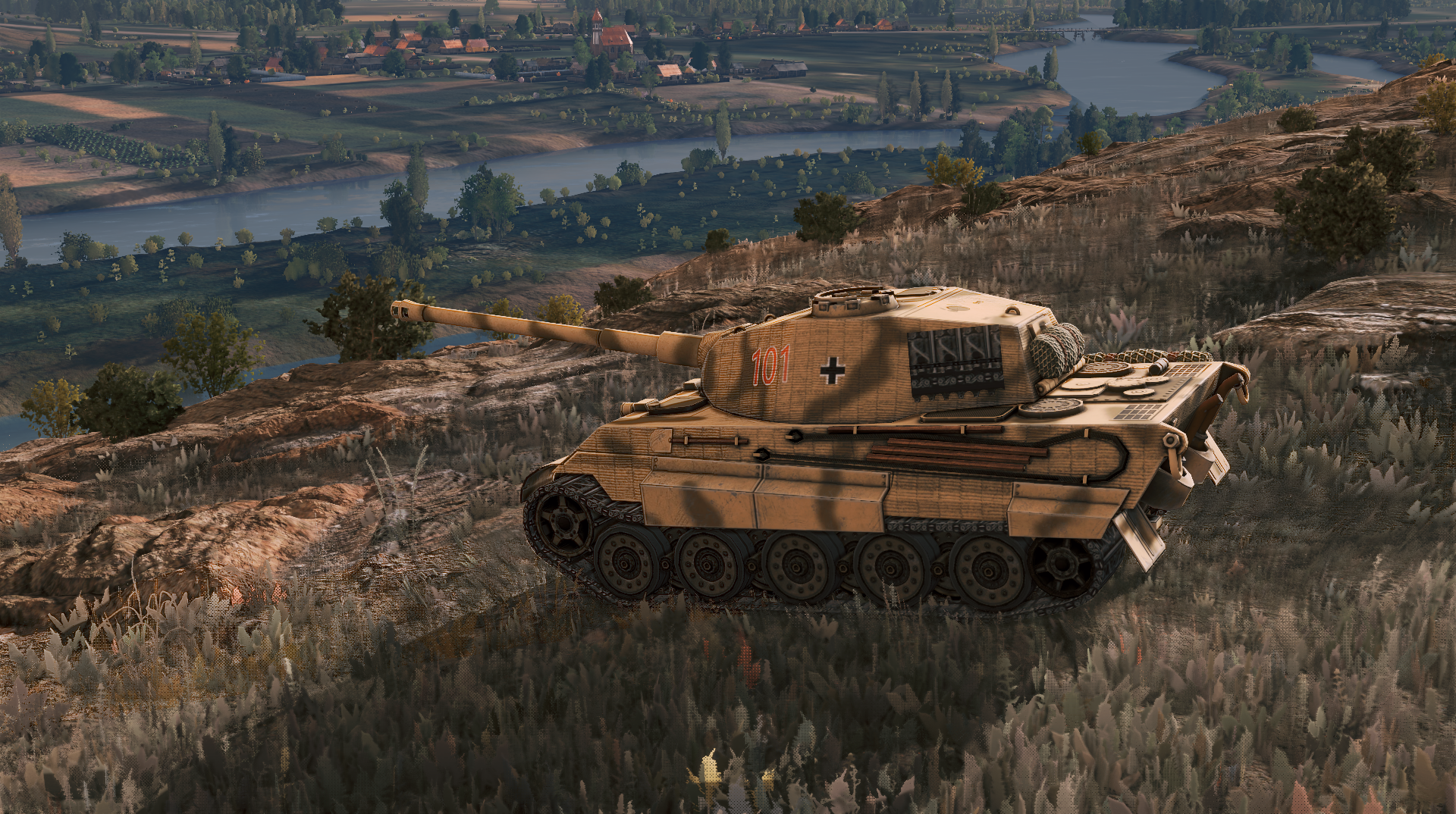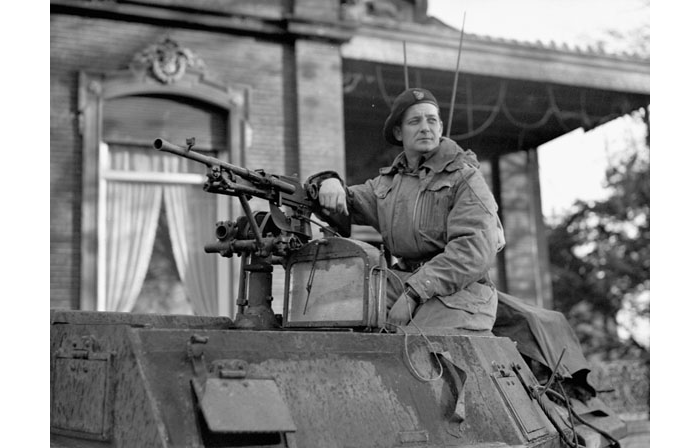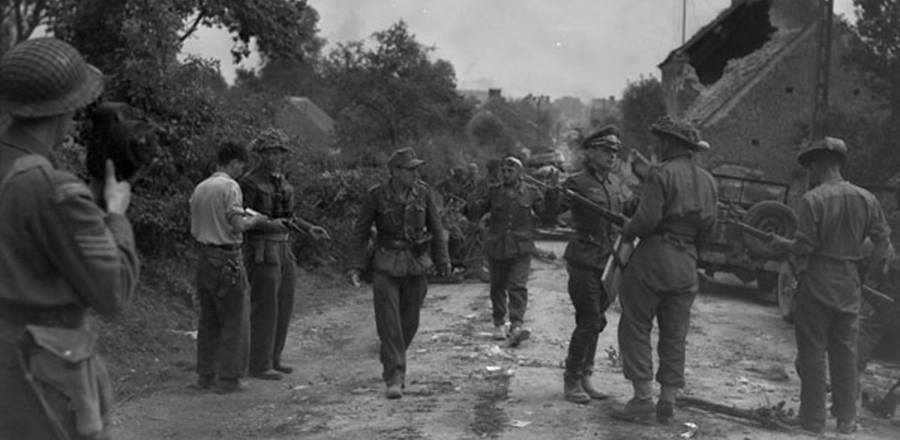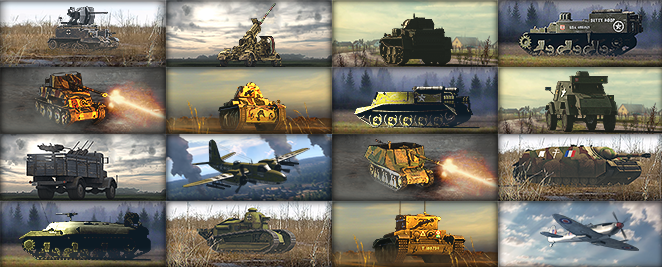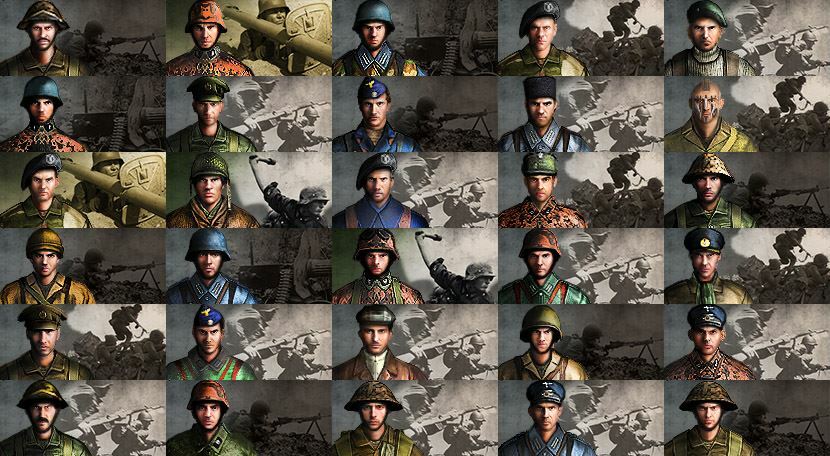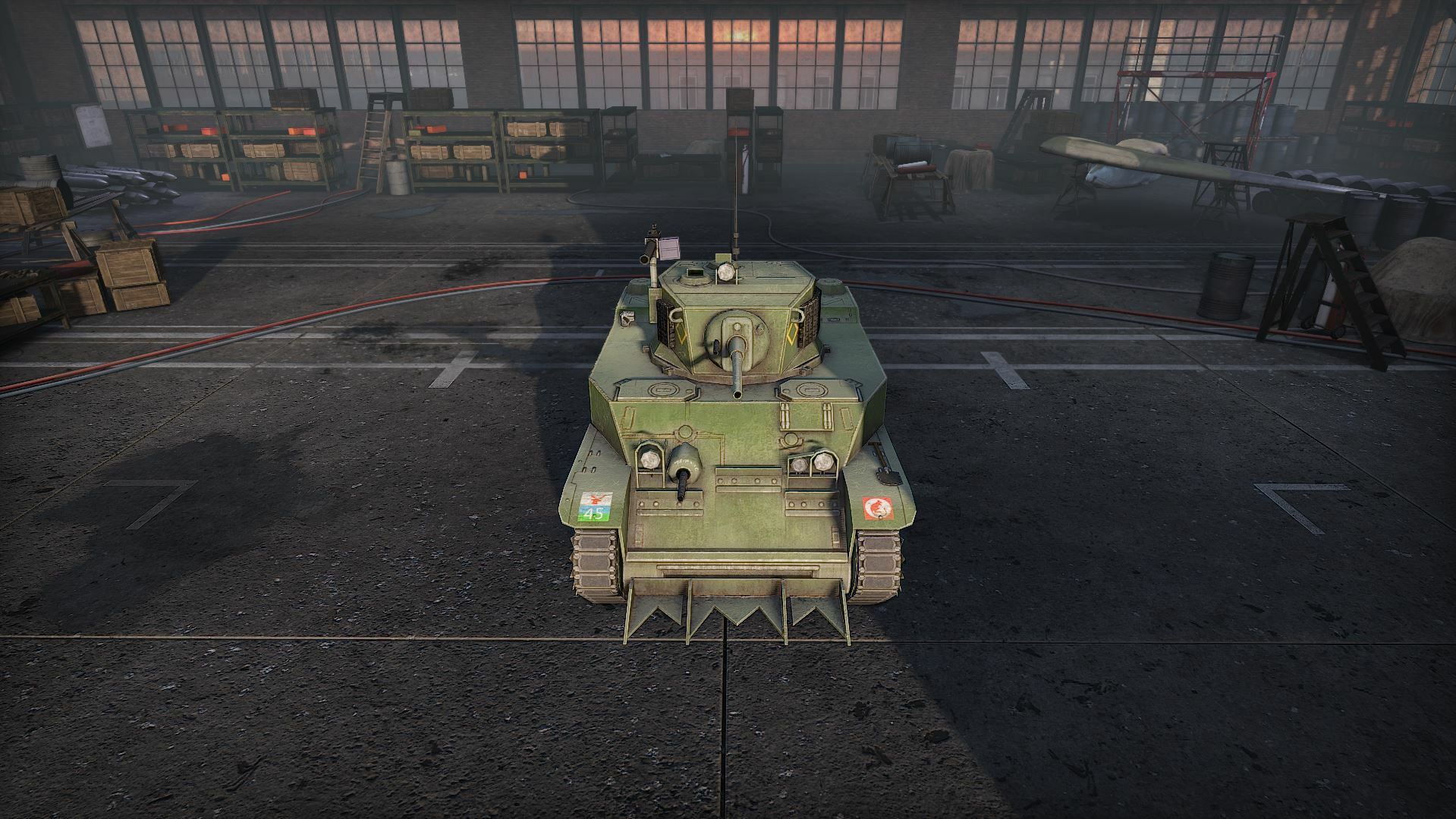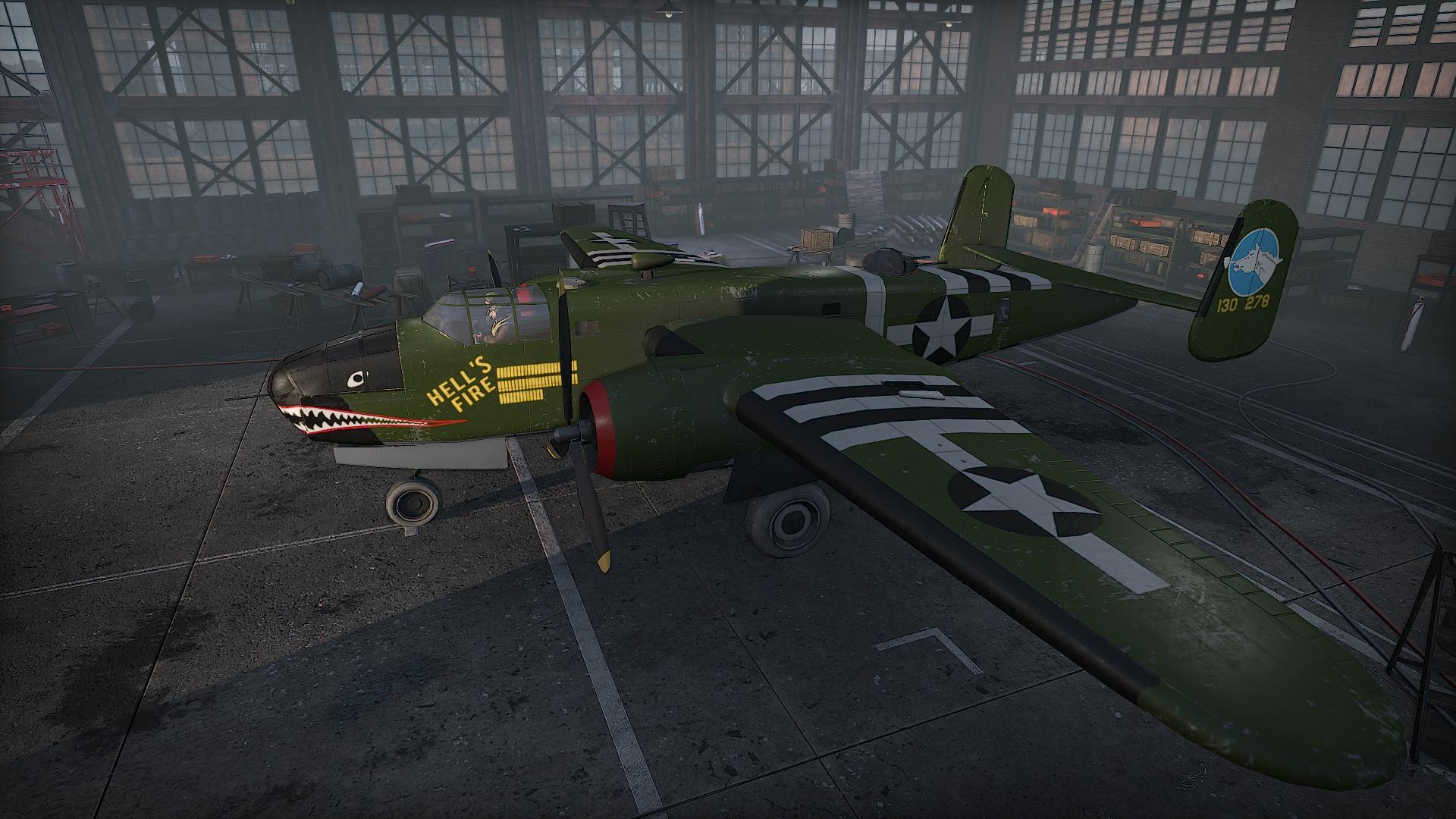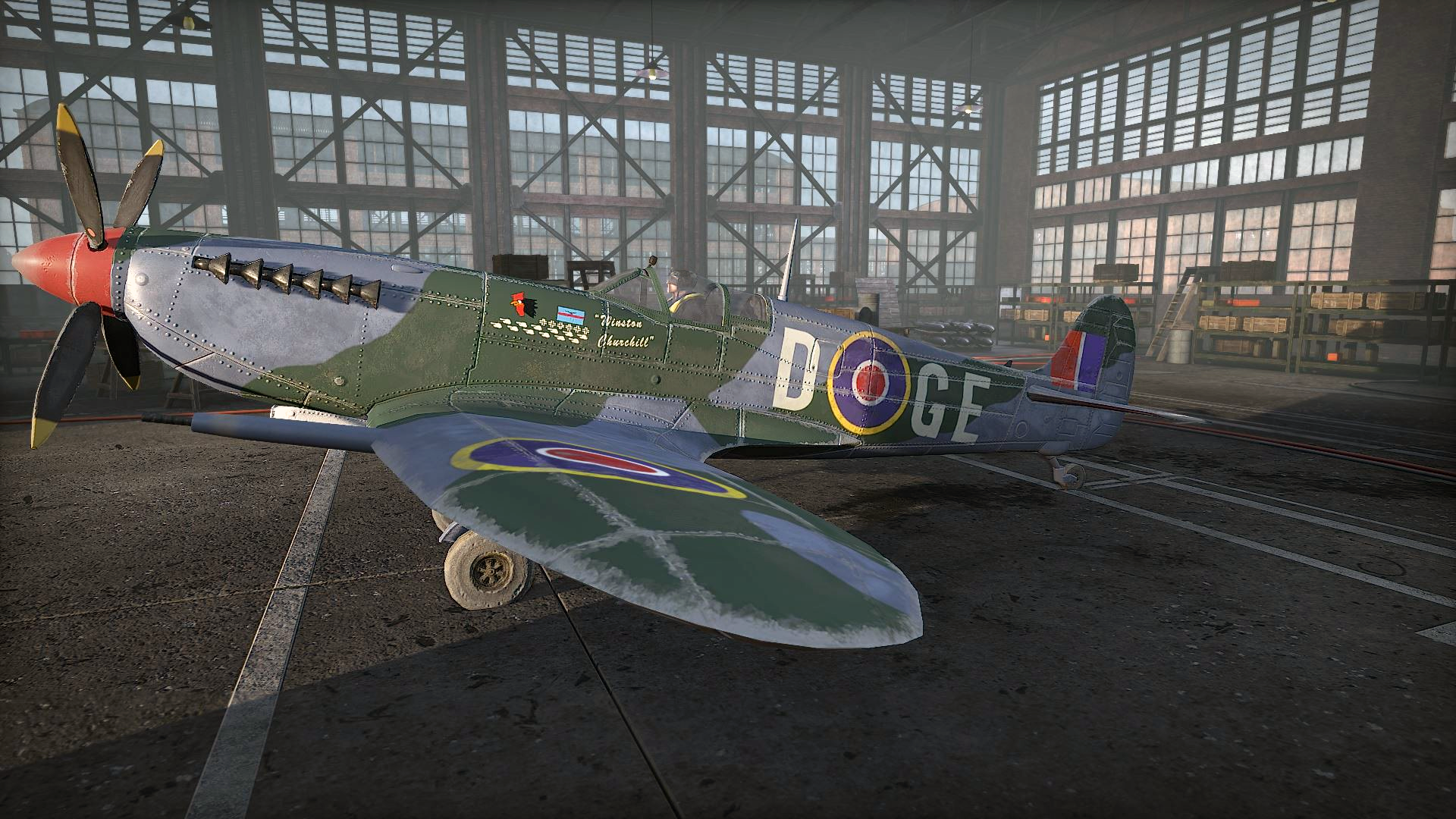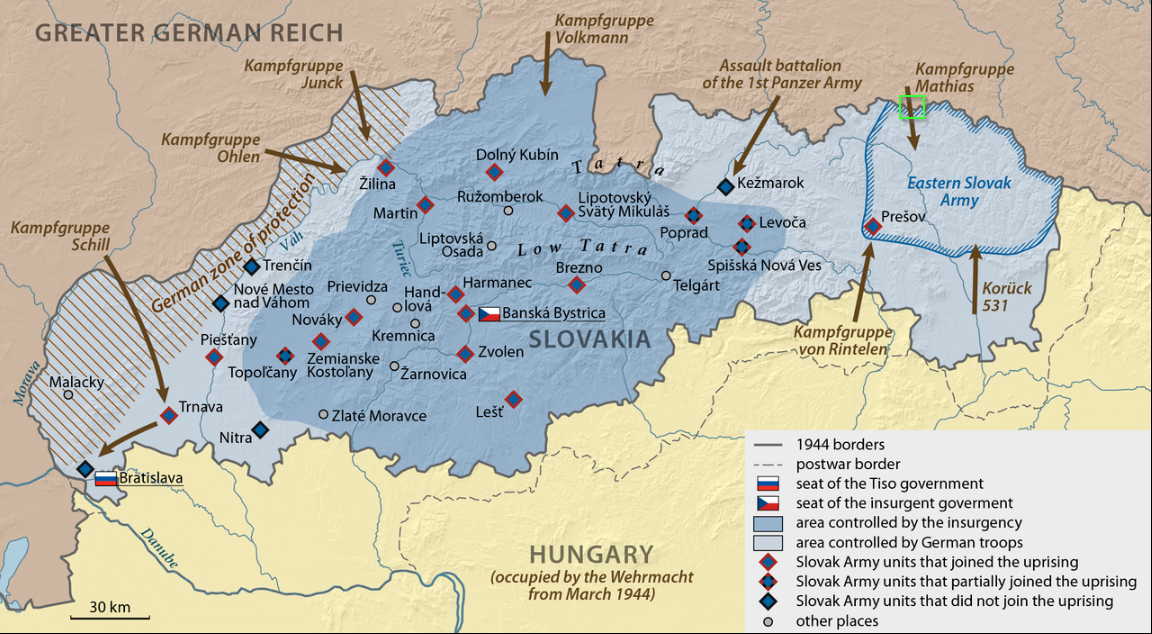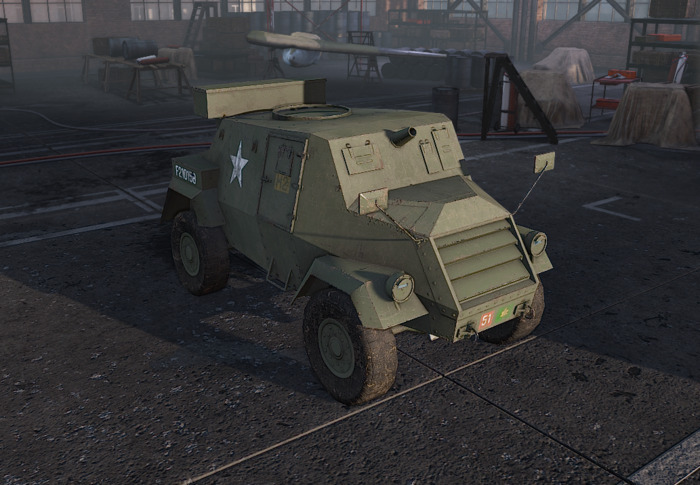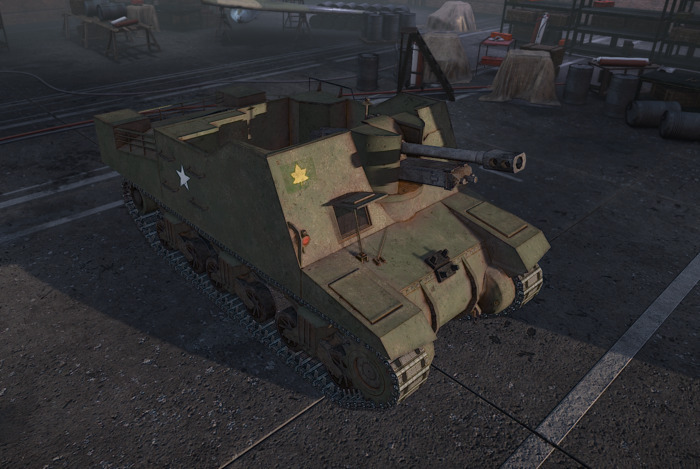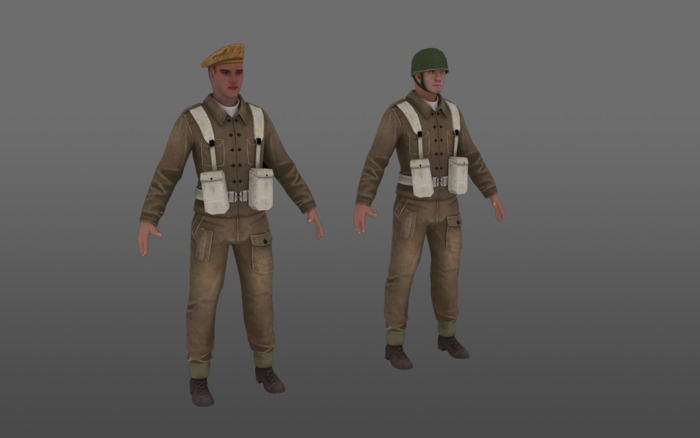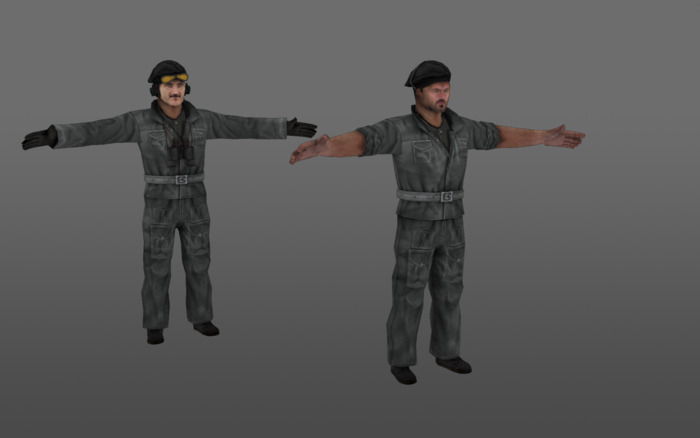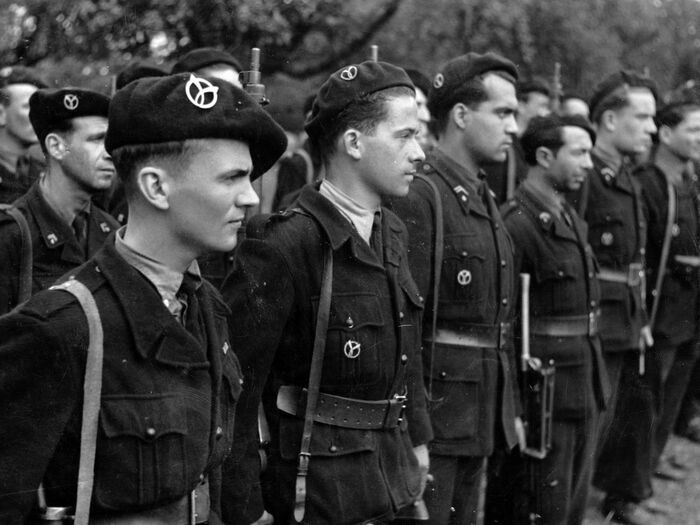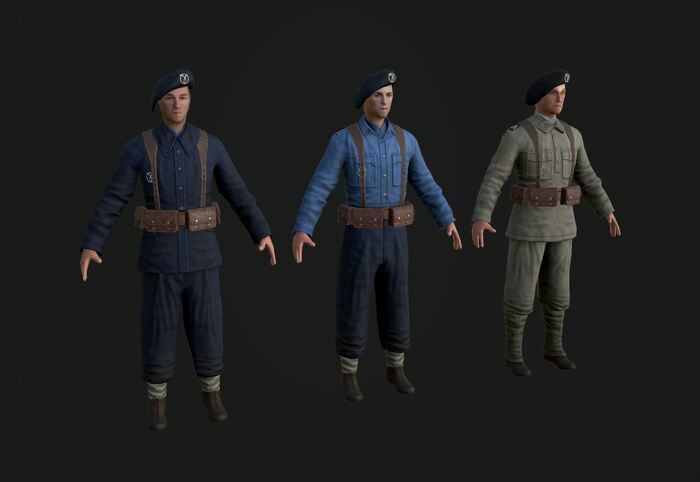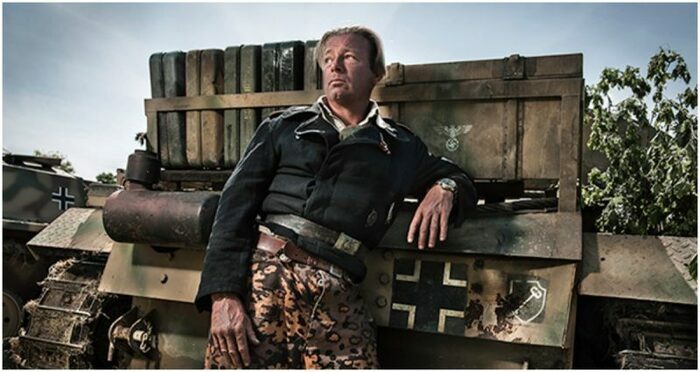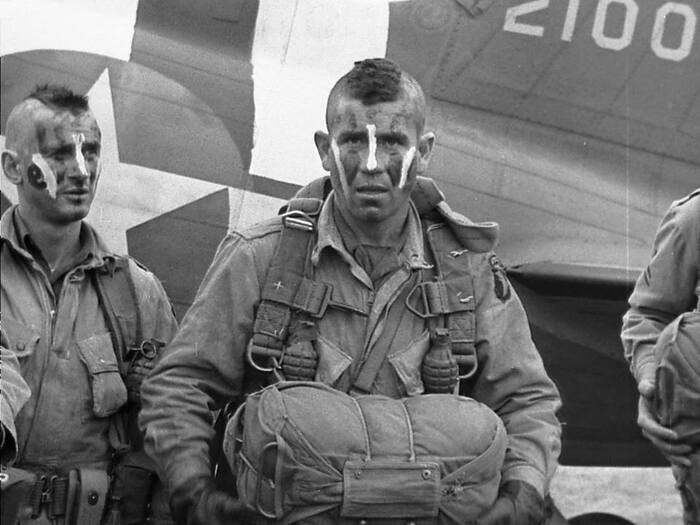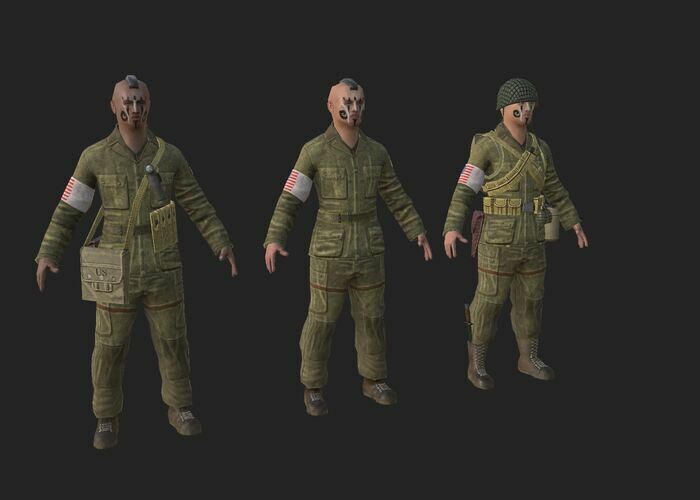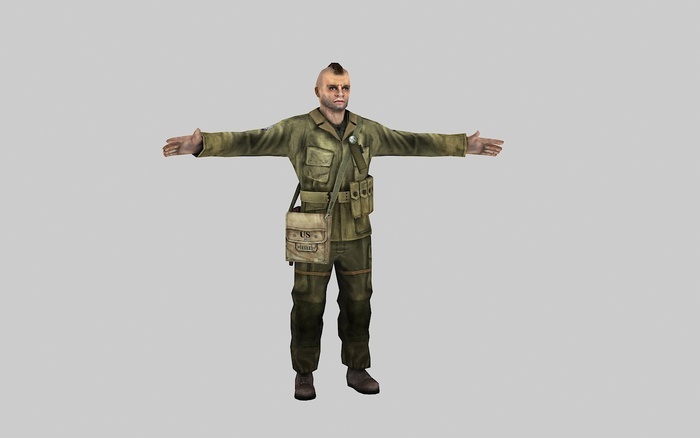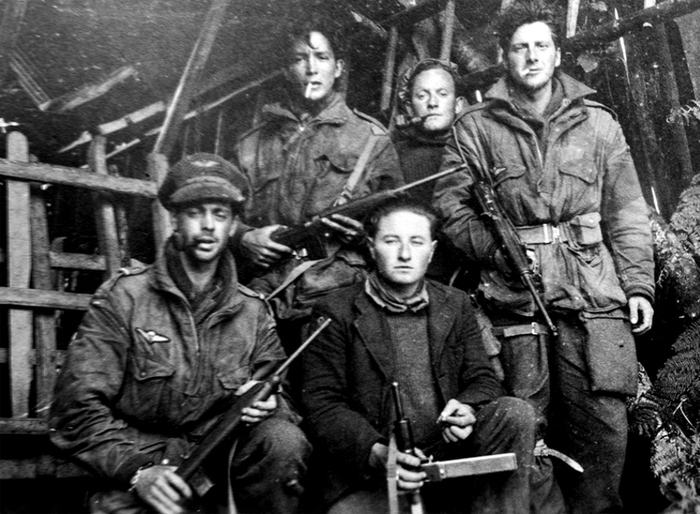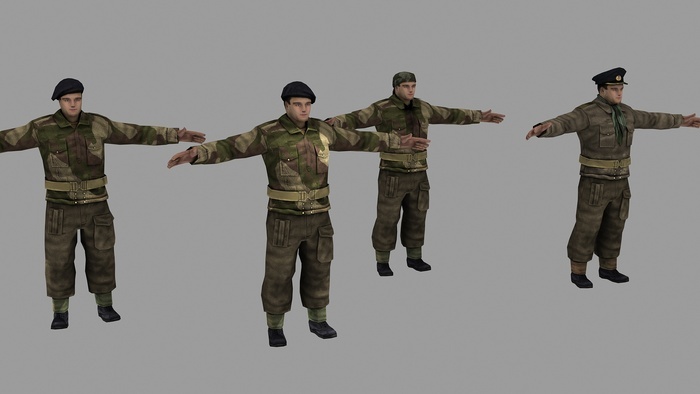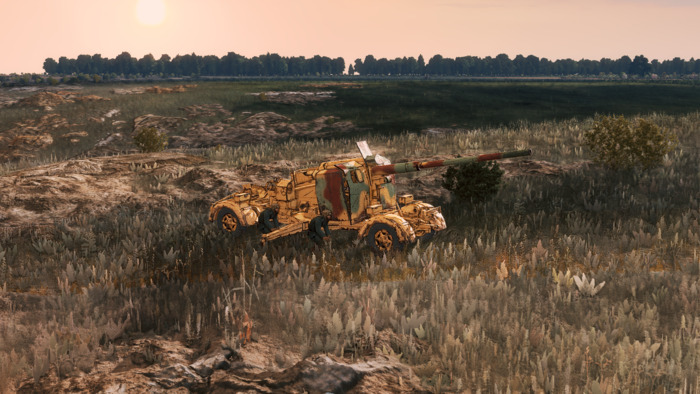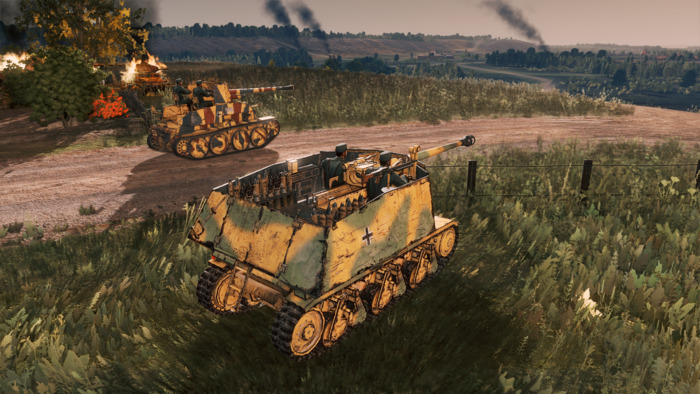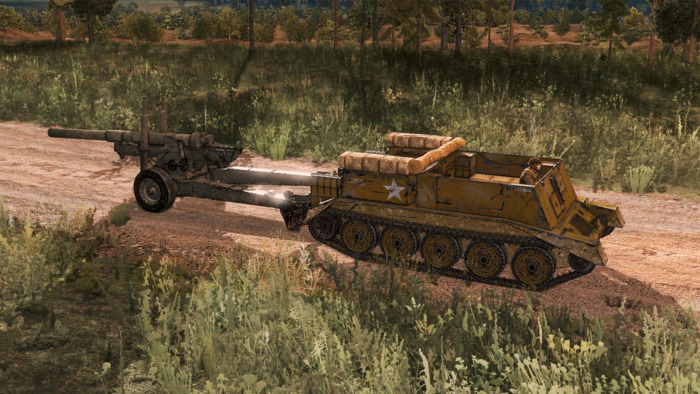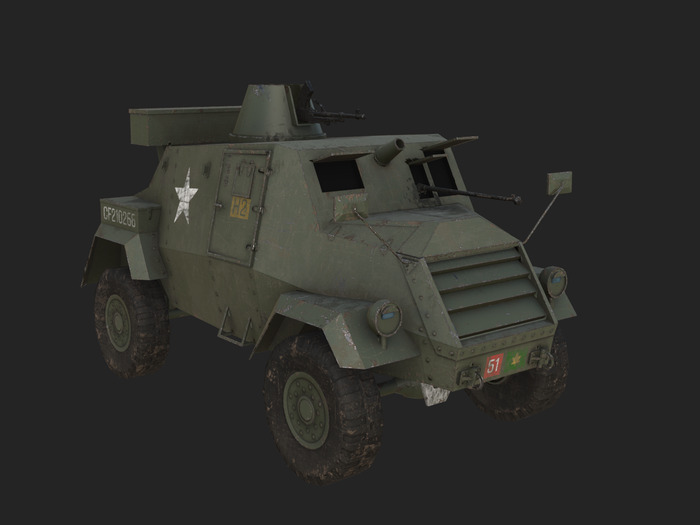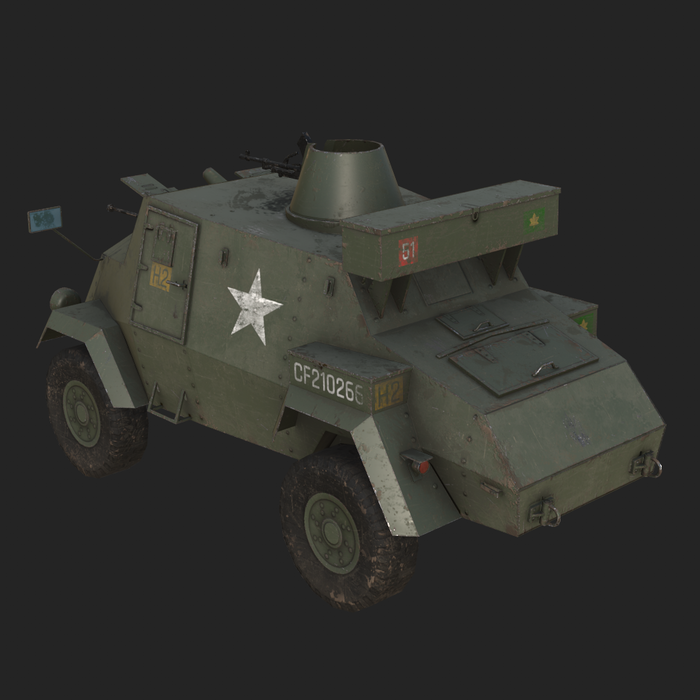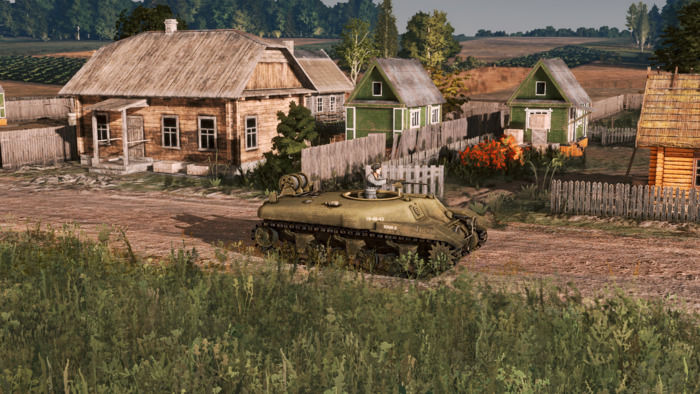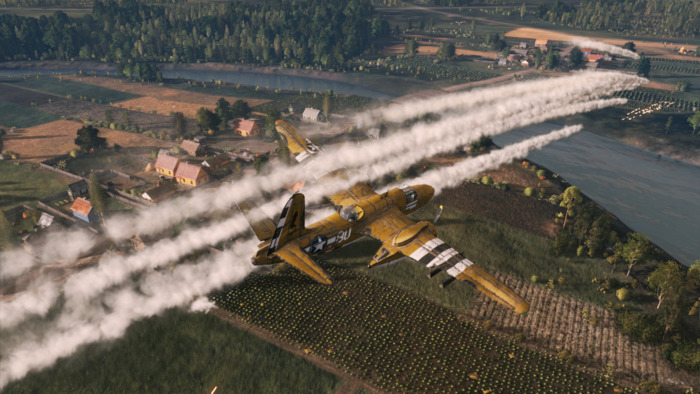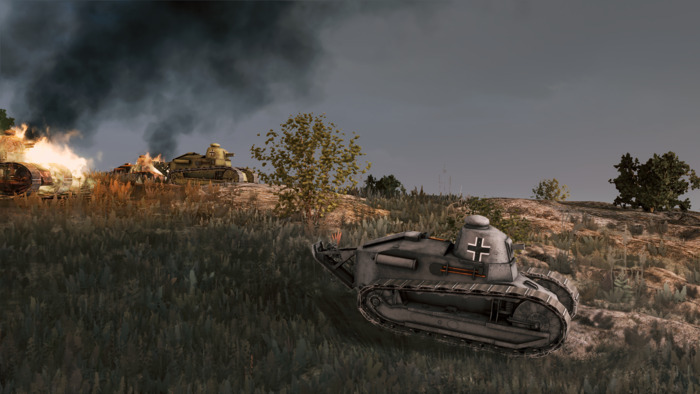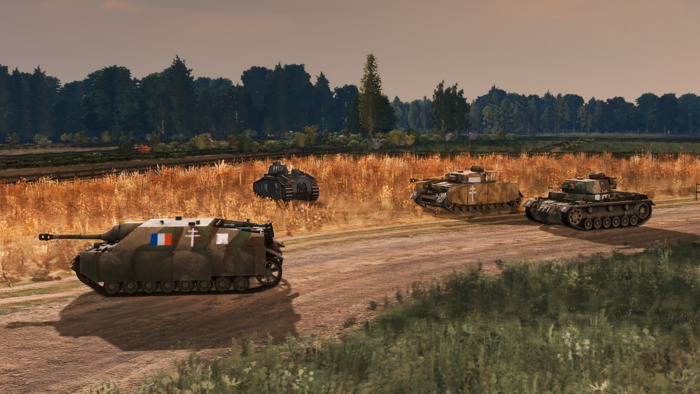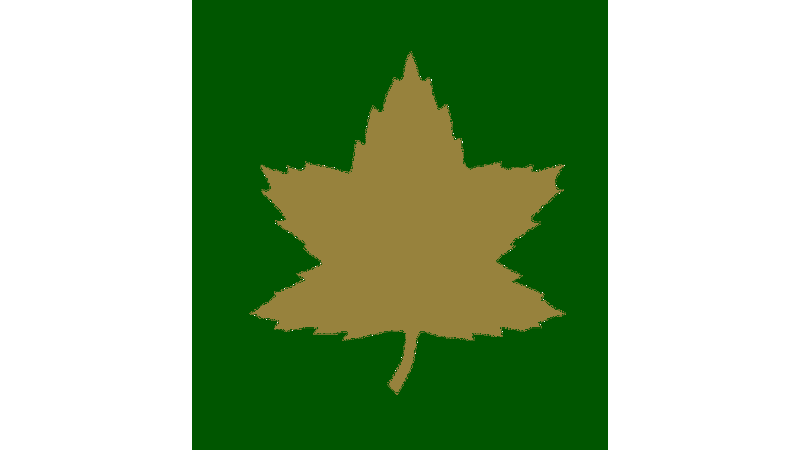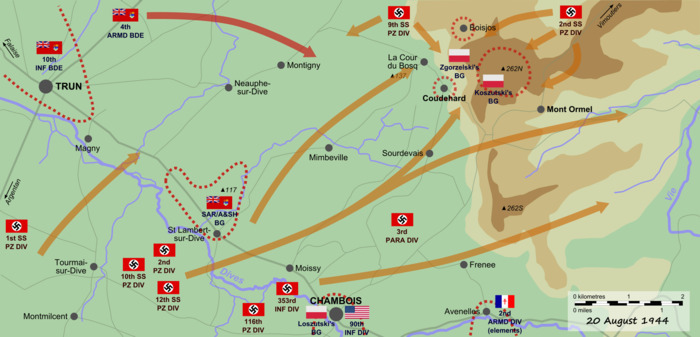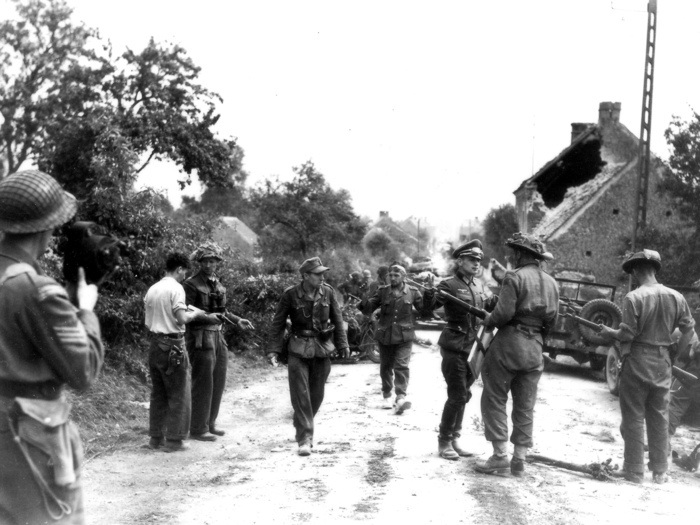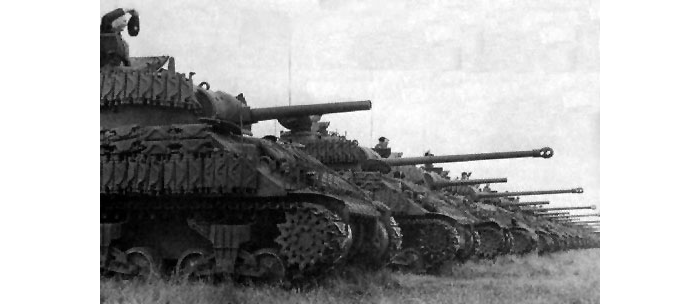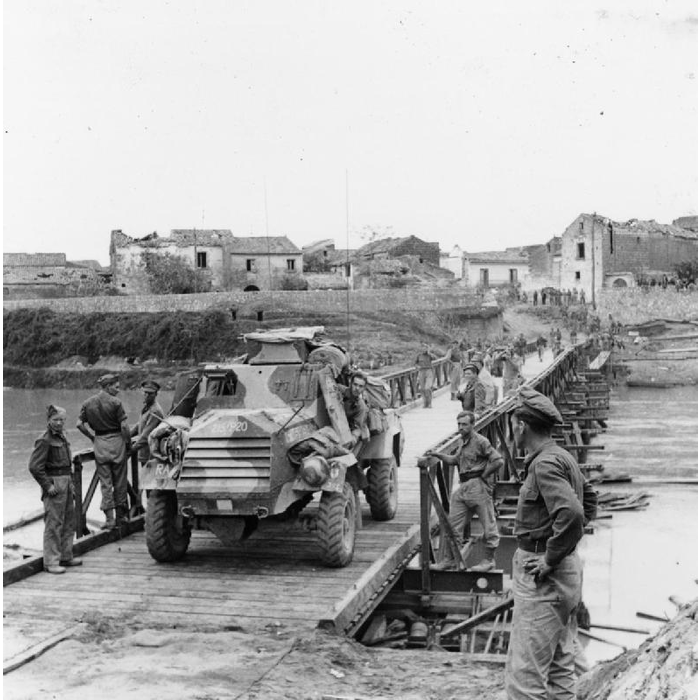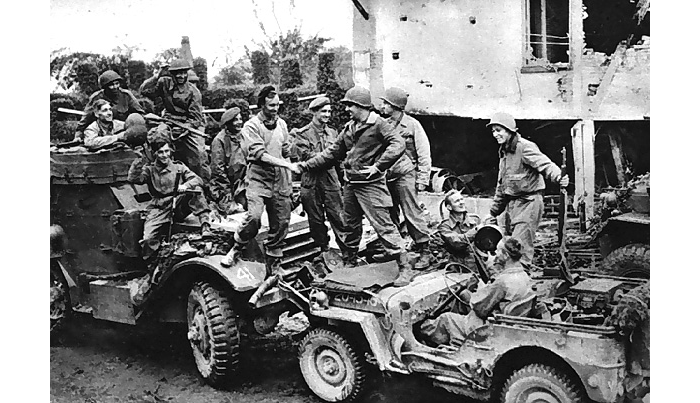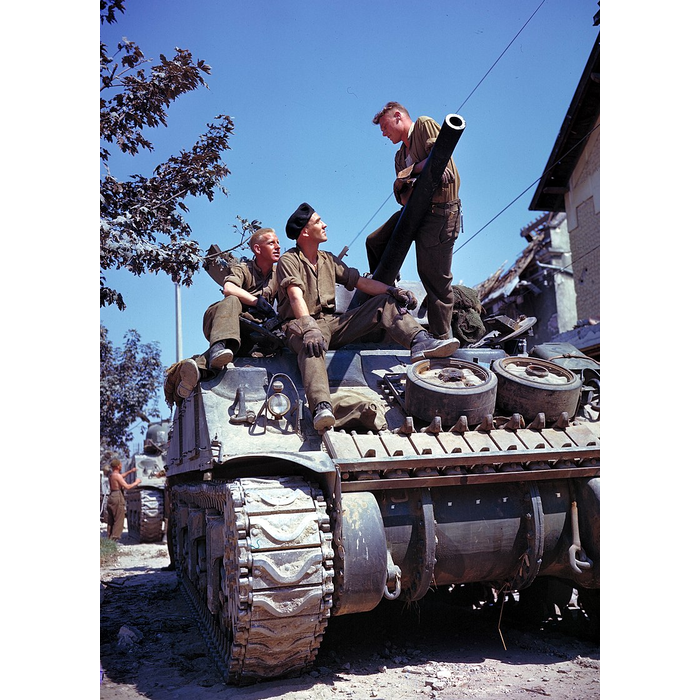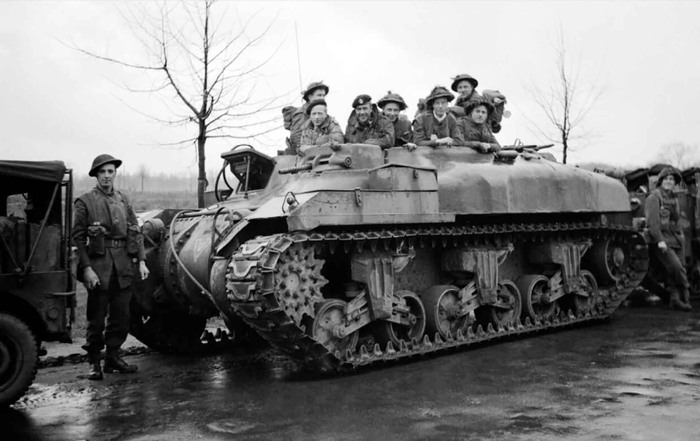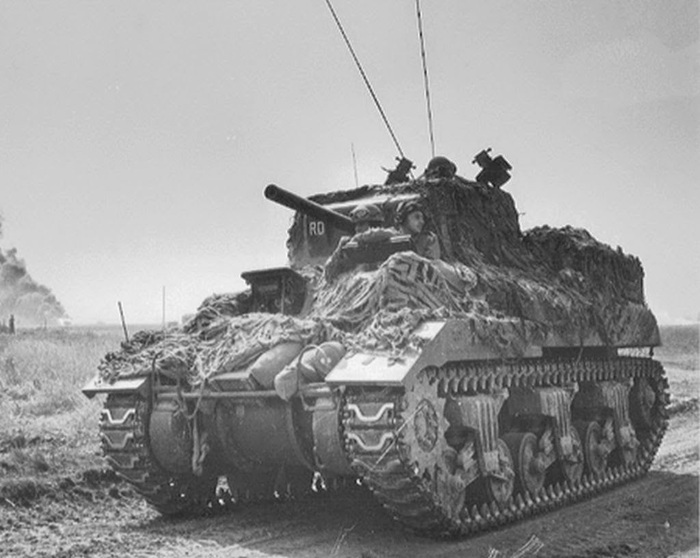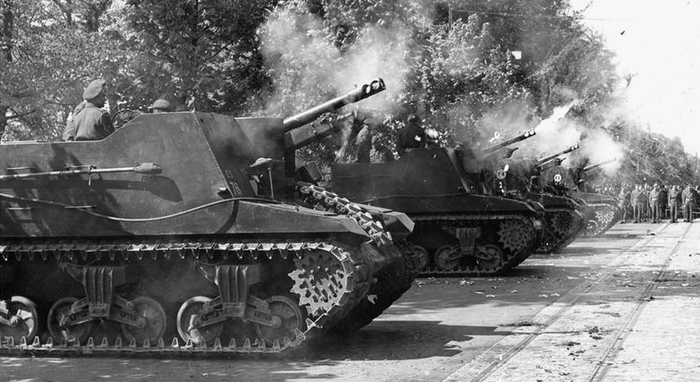
Apr 5, 2024
Steel Division 2 - [EUG] Gal Marcel Bigeard
Hello!
The release of our latest major expansion Steel Division 2: Tribute to Normandy ‘44 is imminent. Next week April 9th is launch day!
In today’s DevBlog, we’ll take a final look at all the new divisions coming to Steel Division 2 with the most recent in-game descriptions.
Let’s go.
We celebrate Steel Division history with Steel Division 2: Tribute to Normandy '44. The major new expansion introduces 14 of the original Steel Division: Normandy '44 divisions to Steel Division 2, updating them to take advantage of the latter title’s gameplay mechanic, traits, unit design, and more. Not only that, the expansion will feature a host of new units, new Aces, unit art, etc.
https://store.steampowered.com/app/2873780/Steel_Division_2__Tribute_to_Normandy_44/
Let’s look at each division as they will appear in-game, including their divisional insignia.

The U.S. 1st Infantry Division "Big Red One" was one of the first to ship to Europe in World War II. Its soldiers amassed valuable experience in amphibious assaults in North Africa and Sicily. The veteran division led the bloody landing on Omaha Beach, cementing its reputation for the rest of the war.
Representing the initial wave to hit the beach, Assault groups are supported by off-map 356mm naval guns. The battlegroup counts on many other experienced units, from weapon teams, mortars, and recon, to leader and AT guns. While the division’s combat soldiers are first-class, armor and supporting arms are more standard. Air cover is substantial, including P-38J fighter-bombers, P-51D fighters, and A-20G bombers.
The U.S. 1st Infantry Division "Big Red One" is an expert in assault operations thanks to its veteran soldiers, heavy artillery, and air power.

The U.S. 4th Armored Division was one of the first “light” American tank divisions to be created in World War II. Kept in reserve during the initial fighting in Normandy, the formation’s armor was unleashed during Patton’s Operation Cobra, playing a crucial role in breaking the frontline and liberating Brittany.
The U.S. 4th Armored emphasizes speed over firepower, relying on Cavalry Scouts, M8 Cavalry armored cars, fast M18 Hellcats tank destroyers, and even an improvised Rosie the Rocketeer bazooka-equipped Piper L-4 Cub. After reconnaissance in force, the way is opened for follow-up M4(75), self-propelled M12 155m, and M30 armored supply vehicles.
The U.S. 4th Armored Division is closer to a swift mechanized battlegroup than a heavy tank force. Mobility, not brute firepower, will be the key to victory.

The U.S. 101st Airborne Division “Screaming Eagles” is one of the most famous American formations. Despite its inexperience and dispersed landings during D-Day, the paratroopers performed well. The division later saw action in Market Garden and famously during the Battle of the Bulge.
The 101st Airborne focuses on Airborne and Glider infantry squads with the Raider trait, which also applies to weapon teams, mortars, recon, leader, and AT guns. Among these are the Filthy Thirteen raiders with their infamous Mohawk haircut. With only light tanks and AA units, the division counts heavily on air forces for support. These come as the B-25C-20 Mitchell bomber, plus numerous P-51 and P-47D fighters and fighter-bombers.
The U.S. 101st Airborne Division relies on well-equipped paratrooper squads, which excel in urban combat or fighting on congested terrain.

The United Kingdom’s Guards Armoured Division was founded in 1941 by grouping various Royal Guards and Household units. Normandy would be the formation’s baptism of fire. While opposed by some of the most experienced German troops, the Guardsmen proved their mettle, especially during Operation Goodwood.
As His Majesty’s own, the Guards Armoured are lavishly equipped with the best the British Army has to offer. A heavy tank division, it can call on Firefly Vc, Cromwell, Sexton, Challenger, and Achilles armored vehicles, and even a Crusader Tractor. Artillery levels the playing field with Long Tom and BL 7,2-inch, bringing a serious amount of firepower to bear.
The Guards Armoured is a British steamroller that counts on plenty of heavy units. Slow-moving, it lacks light troops and can call on only limited air support.

The legendary 7th Armoured Division "Desert Rats” fought with distinction in North Africa. In 1943, Montgomery’s finest were recalled for rest and refit before shipping out to Normandy after D-Day. Here, compared to their previous exploits, the war-weary veterans performed less well on the cramped French battlefields.
The “Desert Rats” call on a high number of experienced units, some with the Battle Weary trait. The division’s tank force relies almost entirely on Cromwells, backed by a handful of Firefly Vc. Unique units include the Abbot of Chantry command tank, Desert Rats elite assault squads, and the Northern Irish recon tanks. Foreign Allied support is present with American M12 GMC self-propelled guns, Allied Belgian Spitfire LF Mk. IXc fighters and New Zealand Tempest fighters and fighter-bombers.
The 7th Armoured Division is an experienced tank battlegroup hampered by war weariness.

The 4th Canadian Armoured Division played a crucial part in the break-out from Caen. The formation made military history when its South Alberta Regiment units closed the Falaise Pocket.
This Commonwealth battlegroup features a British Army TO&E but is mostly equipped with American-made materiel. A distinctive feature is its strong recon, fielding the Sherman V S.A.R. recon tanks, accompanied by Scout S.A.R. squads, both with the Tank Rider trait. The 4th Canadian Armoured can also deploy Otter Mk1 and Mk2 armored cars, plus Mot. Rifles (late) squads in C15TA wheeled APCs. Air support is provided by Canadian airmen in their Typhoon and Mosquito fighter and fighter-bombers, as well as U.S. P-38J fighters and B-26B-4-MA bombers.
The 4th Canadian Armoured Division is a balanced formation with potent tank, infantry, and artillery forces.

The amalgamated Demi-Brigade SAS battlegroup covers the French special forces who dropped in the Brittany peninsula just before D-Day. Together with local French partisans, in a successful campaign, the SAS tied down as many German troops as possible. This lasted until Patton’s tanks joined up in the summer of 1944.
The DBSAS builds its strength over time, starting with light commandos and partisans, such as SAS, Jedburgh or FFI Franc-Tireurs squads. Select heavier FFI units, including a captured Jagdpanzer IV, Canon 47mm Mle. 1937, can deploy later with the first U.S. Army elements. Allied air power also grows, beginning with Lysanders and a handful of American P-47s to A-20G bombers, P-38J, and even the P-61A Black Widow.
The DBSAS is an elite but very light battlegroup with potent air support, needing time to wield its power on the battlefield.

The 1. SS-Panzer “Leibstandarte SS Adolf Hitler” started as the Führer’s personal bodyguard, eventually becoming a full Panzerdivision. Participating in almost all major World War II campaigns, later combat in Italy and the Eastern Front prepared it well for deployment to Normandy. Battle-mauled and in decline compared to its 1943 peak, the elite LSSAH could still count on plentiful experienced units and heavy equipment when countering the Allied landings.
The Axis tank division is well-equipped with Panther, Panzer IV, and StuG III G units, though it lacks lighter armored recon vehicles and air cover. The armored vehicles are backed by veteran LSSAH infantry in various roles, from recon to leaders and panzergrenadiers, all featuring the Fanatical trait.
The 1. SS-Panzerdivision “LSSAH” is a versatile armored division that can quickly switch between defensive and offensive operations.

The 2. Panzerdivision was one of the three original Wehrmacht tank divisions. With a long and illustrious combat history, the formation fought in almost all of the war's major campaigns. Sent for refit in France, after the D-Day landings, its forces were committed to the campaign one by one, where they were much feared by the Allies.
The paragon of the Panzerwaffe bestows one level of experience on all its core troops, but many can only deploy at set times. Heavy and new equipment include Puma armored cars, Jagdpanzer IV tank destroyers, Borgward IV remote-controlled bombs, plus the usual complement of Panzer IV, Panther, Gepard anti-air unit, and Hummel and Wespe self-propelled artillery pieces.
The 2. Panzerdivision is a powerful tank formation that needs time to deploy its full arsenal of heavy-hitting armored units.

The 9. Panzerdivision was created in 1940, taking part in the invasion of the Netherlands, Belgium, and France before ending up on the Eastern Front. In 1944, it was moved to France. After D-Day, the formation was belatedly transferred to Normandy, where it played no major part in the fighting, only to be nearly destroyed in the Falaise pocket.
The formation lacks half its assigned tanks, relying on recon and numerous light units. These include Luchs, as well as Sdkfz. 234/1 and 234/3, plus all remaining Aufk. Panzer I C and even two Tiger Es. Infantry is mixed, from regular Grenadier squads to second-line Grenadier (15W) and Kosaken.
The 9. Panzerdivision is closer to a mechanized infantry division, lacking heavy tank forces, instead balancing it with its infantry and recon units.

The 16. Luftwaffe-Feld-Division was formed from excess Luftwaffe ground personnel in 1942. Mostly untrained and lacking heavy equipment, the battlegroup’s brief Normandy career ended in Operation Charnwood, when it was wiped out, the remains absorbed by 21. Panzerdivision.
The division’s key feature is its light and Disheartened Luftwaffe infantry squads. Artillery is entirely equipped with Soviet F-22 76,2mm and M-30 122mm guns. A unique element is the heavy support by the attached s.Panzer-Abteilung 503 with its Tiger Es and even Köningstiger, plus a few captured 17-Pdrs and even a lone Panzerjäger Firefly. Equally impressive are its anti-air units, from the modern Flak 41 88mm to Flakzwilling 37mm and NAG 500 trucks with Drilling 15mm machine guns.
The 16. Luftwaffe-Feld-Division fields extremes, from unmotivated infantry to some of the hardest-hitting armored and anti-air units available.

Festung Groß-Paris was a “Fortress” formation designated by Hitler to defend Paris at all costs - even if it meant the city’s total destruction. The ad-hoc battlegroup was formed around the second-rate 325. Sicherungs-Division, reinforced by Flak-Brigade 1 and retreating German formations.Engaged in the Paris Uprising, Festungs Groß-Paris surrendered on August 25th, and contrary to orders, leaving the city intact.
The battlegroup fields a large variety of infantry, from Ersatztruppen Paris to the elite “Das Reich” Panzergrenadiers and French collaborationist Miliciens. Armor is limited to a handful Beute tanks and Tiger Es, Panthers, and Jagdpanzer IVs. Supporting arms include the Beo-Fi 156C artillery observer for a 600mm Karl-Gerät super-mortar. Older FW-190A-3 fighters are joined by a massive armada of Ju-88 and Ju-188 bombers.
Festung Groß-Paris is a versatile Panzergrenadier-like division with a wide range of troops, from infantry to armor.

The 91. Luftlande-Division was created late in the war in 1944, envisioned to be airlifted into a combat zone after a first wave of airborne troops had cleared the way. Instead, it served as a small stationary occupation formation. During the Battle of Normandy, the 91. Luftlande-Division absorbed a slew of smaller units and detachments. Quickly isolated, the division was destroyed in the Cherbourg pocket.
The battlegroup features a motley assortment of units, from the LL-Schützen and elite Fs.-Jäger infantry to older Beute R-35, H-39, and B2 tanks, and Stug III G assault guns. Artillery includes NbWfr. 42 300mm, Wurfrahmen UE630(f), and K.390(r) 122m howitzers.
The 91. Luftlande-Division has access to a rarely seen combination of units, from paratroopers to captured tanks. With balanced infantry, artillery, and anti-tank units, its battlefield conduct is like that of a light mechanized infantry division.

The 716. Infanterie-Division was part of the 15. Welle (wave) of mobilization, grouping men unfit for campaign duty into static garrison divisions. Posted on the Atlantikwall, engaged during Allied landings, the division was all but destroyed after a week of heavy fighting.
The division’s core is composed of Disheartened 15W infantry squads. A wide array of other infantry, from Kanalwache scouts to Italian Frewille and Kosaken squads, deploys in support. The division’s utter lack of tanks is unique, with only a few mechanized units available, such as the SPW 233, Sdkz 135/1 150mm artillery, or S307(f) PAK and Marder I H39 tank destroyers. The fast AR. 234B-2 is available as an unarmed recon.
The 716. Infanterie-Division is a defensive battlegroup with few armored vehicles but able to field a mass of infantry backed by lots of artillery.
Steel Division 2: Tribute to Normandy '44 contains 14 new divisions from five nations and 200 new units, including brand-new vehicle and plane models, voice acting, and new infantry model sets. The latest expansion will let players take the divisions solo, online, or cooperatively. Steel Division 2: Tribute to Normandy '44 ships for €19,99, the same price as previous Steel Division 2 “Tribute” expansions.
If you want to do some background reading or catch up on the many historical and gameplay insights we published on Steel Division: Tribute to Normandy ‘44, we have a handy forum post ready. It links to all divisional Versus posts, units, backgrounds, new Aces, and much more.
Be sure to check it out by following it here.
Note, Steel Division 2: Tribute to Normandy ‘44 does not contain new maps. These are planned for future expansions.
In response to some of the community’s questions: Steel Division 2: Tribute to Normandy ‘44 is one of our “division-focused” expansions. We are actively working on the next Steel Division 2 expansion in which an extensive Army General campaign will take center stage - the Battle of Dukla Pass.
Don’t be shy, join the Steel Division 2 community on our Steam forums. The latest Steel Division 2 news can also be encountered on our Instagram.
Looking for an online game? Visit the Discord server or Reddit page and get involved with the lively Steel Division 2 community!
See you on the battlefield, commanders!
The release of our latest major expansion Steel Division 2: Tribute to Normandy ‘44 is imminent. Next week April 9th is launch day!
In today’s DevBlog, we’ll take a final look at all the new divisions coming to Steel Division 2 with the most recent in-game descriptions.
Let’s go.
Steel Division 2: Tribute to Normandy '44
We celebrate Steel Division history with Steel Division 2: Tribute to Normandy '44. The major new expansion introduces 14 of the original Steel Division: Normandy '44 divisions to Steel Division 2, updating them to take advantage of the latter title’s gameplay mechanic, traits, unit design, and more. Not only that, the expansion will feature a host of new units, new Aces, unit art, etc.
https://store.steampowered.com/app/2873780/Steel_Division_2__Tribute_to_Normandy_44/
Let’s look at each division as they will appear in-game, including their divisional insignia.
Allied Divisions
U.S. 1st Infantry Division "Big Red One"

The U.S. 1st Infantry Division "Big Red One" was one of the first to ship to Europe in World War II. Its soldiers amassed valuable experience in amphibious assaults in North Africa and Sicily. The veteran division led the bloody landing on Omaha Beach, cementing its reputation for the rest of the war.
Representing the initial wave to hit the beach, Assault groups are supported by off-map 356mm naval guns. The battlegroup counts on many other experienced units, from weapon teams, mortars, and recon, to leader and AT guns. While the division’s combat soldiers are first-class, armor and supporting arms are more standard. Air cover is substantial, including P-38J fighter-bombers, P-51D fighters, and A-20G bombers.
The U.S. 1st Infantry Division "Big Red One" is an expert in assault operations thanks to its veteran soldiers, heavy artillery, and air power.
U.S. 4th Armored Division

The U.S. 4th Armored Division was one of the first “light” American tank divisions to be created in World War II. Kept in reserve during the initial fighting in Normandy, the formation’s armor was unleashed during Patton’s Operation Cobra, playing a crucial role in breaking the frontline and liberating Brittany.
The U.S. 4th Armored emphasizes speed over firepower, relying on Cavalry Scouts, M8 Cavalry armored cars, fast M18 Hellcats tank destroyers, and even an improvised Rosie the Rocketeer bazooka-equipped Piper L-4 Cub. After reconnaissance in force, the way is opened for follow-up M4(75), self-propelled M12 155m, and M30 armored supply vehicles.
The U.S. 4th Armored Division is closer to a swift mechanized battlegroup than a heavy tank force. Mobility, not brute firepower, will be the key to victory.
U.S. 101st Airborne Division

The U.S. 101st Airborne Division “Screaming Eagles” is one of the most famous American formations. Despite its inexperience and dispersed landings during D-Day, the paratroopers performed well. The division later saw action in Market Garden and famously during the Battle of the Bulge.
The 101st Airborne focuses on Airborne and Glider infantry squads with the Raider trait, which also applies to weapon teams, mortars, recon, leader, and AT guns. Among these are the Filthy Thirteen raiders with their infamous Mohawk haircut. With only light tanks and AA units, the division counts heavily on air forces for support. These come as the B-25C-20 Mitchell bomber, plus numerous P-51 and P-47D fighters and fighter-bombers.
The U.S. 101st Airborne Division relies on well-equipped paratrooper squads, which excel in urban combat or fighting on congested terrain.
UK Guards Armoured

The United Kingdom’s Guards Armoured Division was founded in 1941 by grouping various Royal Guards and Household units. Normandy would be the formation’s baptism of fire. While opposed by some of the most experienced German troops, the Guardsmen proved their mettle, especially during Operation Goodwood.
As His Majesty’s own, the Guards Armoured are lavishly equipped with the best the British Army has to offer. A heavy tank division, it can call on Firefly Vc, Cromwell, Sexton, Challenger, and Achilles armored vehicles, and even a Crusader Tractor. Artillery levels the playing field with Long Tom and BL 7,2-inch, bringing a serious amount of firepower to bear.
The Guards Armoured is a British steamroller that counts on plenty of heavy units. Slow-moving, it lacks light troops and can call on only limited air support.
UK 7th Armoured "Desert Rats"

The legendary 7th Armoured Division "Desert Rats” fought with distinction in North Africa. In 1943, Montgomery’s finest were recalled for rest and refit before shipping out to Normandy after D-Day. Here, compared to their previous exploits, the war-weary veterans performed less well on the cramped French battlefields.
The “Desert Rats” call on a high number of experienced units, some with the Battle Weary trait. The division’s tank force relies almost entirely on Cromwells, backed by a handful of Firefly Vc. Unique units include the Abbot of Chantry command tank, Desert Rats elite assault squads, and the Northern Irish recon tanks. Foreign Allied support is present with American M12 GMC self-propelled guns, Allied Belgian Spitfire LF Mk. IXc fighters and New Zealand Tempest fighters and fighter-bombers.
The 7th Armoured Division is an experienced tank battlegroup hampered by war weariness.
4th Canadian Armoured Division

The 4th Canadian Armoured Division played a crucial part in the break-out from Caen. The formation made military history when its South Alberta Regiment units closed the Falaise Pocket.
This Commonwealth battlegroup features a British Army TO&E but is mostly equipped with American-made materiel. A distinctive feature is its strong recon, fielding the Sherman V S.A.R. recon tanks, accompanied by Scout S.A.R. squads, both with the Tank Rider trait. The 4th Canadian Armoured can also deploy Otter Mk1 and Mk2 armored cars, plus Mot. Rifles (late) squads in C15TA wheeled APCs. Air support is provided by Canadian airmen in their Typhoon and Mosquito fighter and fighter-bombers, as well as U.S. P-38J fighters and B-26B-4-MA bombers.
The 4th Canadian Armoured Division is a balanced formation with potent tank, infantry, and artillery forces.
French Demi-Brigade SAS

The amalgamated Demi-Brigade SAS battlegroup covers the French special forces who dropped in the Brittany peninsula just before D-Day. Together with local French partisans, in a successful campaign, the SAS tied down as many German troops as possible. This lasted until Patton’s tanks joined up in the summer of 1944.
The DBSAS builds its strength over time, starting with light commandos and partisans, such as SAS, Jedburgh or FFI Franc-Tireurs squads. Select heavier FFI units, including a captured Jagdpanzer IV, Canon 47mm Mle. 1937, can deploy later with the first U.S. Army elements. Allied air power also grows, beginning with Lysanders and a handful of American P-47s to A-20G bombers, P-38J, and even the P-61A Black Widow.
The DBSAS is an elite but very light battlegroup with potent air support, needing time to wield its power on the battlefield.
Axis Divisions
1. SS-Panzer "LSSAH"

The 1. SS-Panzer “Leibstandarte SS Adolf Hitler” started as the Führer’s personal bodyguard, eventually becoming a full Panzerdivision. Participating in almost all major World War II campaigns, later combat in Italy and the Eastern Front prepared it well for deployment to Normandy. Battle-mauled and in decline compared to its 1943 peak, the elite LSSAH could still count on plentiful experienced units and heavy equipment when countering the Allied landings.
The Axis tank division is well-equipped with Panther, Panzer IV, and StuG III G units, though it lacks lighter armored recon vehicles and air cover. The armored vehicles are backed by veteran LSSAH infantry in various roles, from recon to leaders and panzergrenadiers, all featuring the Fanatical trait.
The 1. SS-Panzerdivision “LSSAH” is a versatile armored division that can quickly switch between defensive and offensive operations.
2. Panzerdivision

The 2. Panzerdivision was one of the three original Wehrmacht tank divisions. With a long and illustrious combat history, the formation fought in almost all of the war's major campaigns. Sent for refit in France, after the D-Day landings, its forces were committed to the campaign one by one, where they were much feared by the Allies.
The paragon of the Panzerwaffe bestows one level of experience on all its core troops, but many can only deploy at set times. Heavy and new equipment include Puma armored cars, Jagdpanzer IV tank destroyers, Borgward IV remote-controlled bombs, plus the usual complement of Panzer IV, Panther, Gepard anti-air unit, and Hummel and Wespe self-propelled artillery pieces.
The 2. Panzerdivision is a powerful tank formation that needs time to deploy its full arsenal of heavy-hitting armored units.
9. Panzerdivision

The 9. Panzerdivision was created in 1940, taking part in the invasion of the Netherlands, Belgium, and France before ending up on the Eastern Front. In 1944, it was moved to France. After D-Day, the formation was belatedly transferred to Normandy, where it played no major part in the fighting, only to be nearly destroyed in the Falaise pocket.
The formation lacks half its assigned tanks, relying on recon and numerous light units. These include Luchs, as well as Sdkfz. 234/1 and 234/3, plus all remaining Aufk. Panzer I C and even two Tiger Es. Infantry is mixed, from regular Grenadier squads to second-line Grenadier (15W) and Kosaken.
The 9. Panzerdivision is closer to a mechanized infantry division, lacking heavy tank forces, instead balancing it with its infantry and recon units.
16. Luftwaffe-Feld-Division

The 16. Luftwaffe-Feld-Division was formed from excess Luftwaffe ground personnel in 1942. Mostly untrained and lacking heavy equipment, the battlegroup’s brief Normandy career ended in Operation Charnwood, when it was wiped out, the remains absorbed by 21. Panzerdivision.
The division’s key feature is its light and Disheartened Luftwaffe infantry squads. Artillery is entirely equipped with Soviet F-22 76,2mm and M-30 122mm guns. A unique element is the heavy support by the attached s.Panzer-Abteilung 503 with its Tiger Es and even Köningstiger, plus a few captured 17-Pdrs and even a lone Panzerjäger Firefly. Equally impressive are its anti-air units, from the modern Flak 41 88mm to Flakzwilling 37mm and NAG 500 trucks with Drilling 15mm machine guns.
The 16. Luftwaffe-Feld-Division fields extremes, from unmotivated infantry to some of the hardest-hitting armored and anti-air units available.
Festung Groß-Paris

Festung Groß-Paris was a “Fortress” formation designated by Hitler to defend Paris at all costs - even if it meant the city’s total destruction. The ad-hoc battlegroup was formed around the second-rate 325. Sicherungs-Division, reinforced by Flak-Brigade 1 and retreating German formations.Engaged in the Paris Uprising, Festungs Groß-Paris surrendered on August 25th, and contrary to orders, leaving the city intact.
The battlegroup fields a large variety of infantry, from Ersatztruppen Paris to the elite “Das Reich” Panzergrenadiers and French collaborationist Miliciens. Armor is limited to a handful Beute tanks and Tiger Es, Panthers, and Jagdpanzer IVs. Supporting arms include the Beo-Fi 156C artillery observer for a 600mm Karl-Gerät super-mortar. Older FW-190A-3 fighters are joined by a massive armada of Ju-88 and Ju-188 bombers.
Festung Groß-Paris is a versatile Panzergrenadier-like division with a wide range of troops, from infantry to armor.
91. Luftlande

The 91. Luftlande-Division was created late in the war in 1944, envisioned to be airlifted into a combat zone after a first wave of airborne troops had cleared the way. Instead, it served as a small stationary occupation formation. During the Battle of Normandy, the 91. Luftlande-Division absorbed a slew of smaller units and detachments. Quickly isolated, the division was destroyed in the Cherbourg pocket.
The battlegroup features a motley assortment of units, from the LL-Schützen and elite Fs.-Jäger infantry to older Beute R-35, H-39, and B2 tanks, and Stug III G assault guns. Artillery includes NbWfr. 42 300mm, Wurfrahmen UE630(f), and K.390(r) 122m howitzers.
The 91. Luftlande-Division has access to a rarely seen combination of units, from paratroopers to captured tanks. With balanced infantry, artillery, and anti-tank units, its battlefield conduct is like that of a light mechanized infantry division.
716. Infanterie

The 716. Infanterie-Division was part of the 15. Welle (wave) of mobilization, grouping men unfit for campaign duty into static garrison divisions. Posted on the Atlantikwall, engaged during Allied landings, the division was all but destroyed after a week of heavy fighting.
The division’s core is composed of Disheartened 15W infantry squads. A wide array of other infantry, from Kanalwache scouts to Italian Frewille and Kosaken squads, deploys in support. The division’s utter lack of tanks is unique, with only a few mechanized units available, such as the SPW 233, Sdkz 135/1 150mm artillery, or S307(f) PAK and Marder I H39 tank destroyers. The fast AR. 234B-2 is available as an unarmed recon.
The 716. Infanterie-Division is a defensive battlegroup with few armored vehicles but able to field a mass of infantry backed by lots of artillery.
Some Steel Division 2: Tribute to Normandy ‘44 insights
Steel Division 2: Tribute to Normandy '44 contains 14 new divisions from five nations and 200 new units, including brand-new vehicle and plane models, voice acting, and new infantry model sets. The latest expansion will let players take the divisions solo, online, or cooperatively. Steel Division 2: Tribute to Normandy '44 ships for €19,99, the same price as previous Steel Division 2 “Tribute” expansions.
If you want to do some background reading or catch up on the many historical and gameplay insights we published on Steel Division: Tribute to Normandy ‘44, we have a handy forum post ready. It links to all divisional Versus posts, units, backgrounds, new Aces, and much more.
Be sure to check it out by following it here.
Note, Steel Division 2: Tribute to Normandy ‘44 does not contain new maps. These are planned for future expansions.
See you on the battlefield
In response to some of the community’s questions: Steel Division 2: Tribute to Normandy ‘44 is one of our “division-focused” expansions. We are actively working on the next Steel Division 2 expansion in which an extensive Army General campaign will take center stage - the Battle of Dukla Pass.
Don’t be shy, join the Steel Division 2 community on our Steam forums. The latest Steel Division 2 news can also be encountered on our Instagram.
Looking for an online game? Visit the Discord server or Reddit page and get involved with the lively Steel Division 2 community!
See you on the battlefield, commanders!





